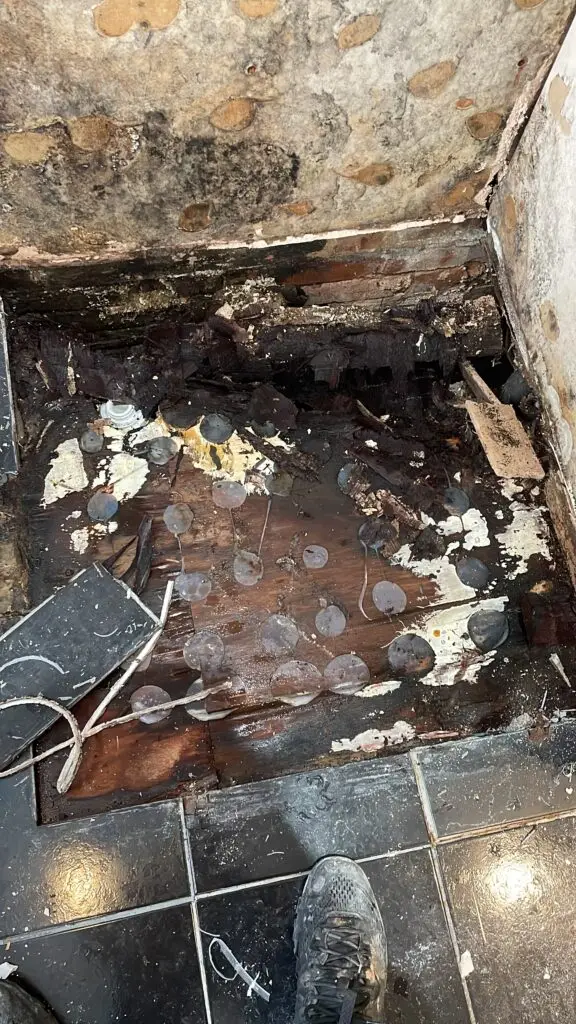Our Property Solutions:
Timber Treatment & Restoration
Protect and preserve your property with our expert timber treatment services. From treating woodworm and rot to restoring structural integrity, we provide reliable solutions to ensure the longevity and durability of your timber.
- Wet Rot
- Dry Rot
- Wood Worm

Wet Rot
Appearance:
Typically appears darker in colour, often with a damp, spongy texture.
Location:
Commonly found in areas with high moisture levels, such as around leaking pipes, roofs, or windows.
Signs:
Look for cracked or flaking timber, accompanied by a musty odour. Wet rot tends to affect the surface layers of wood and may cause localised damage.
How We Treat Wet Rot:
We start by inspecting the affected area to assess damage and identify the source of moisture. Once located, we eliminate the moisture issue, repair leaks, and improve ventilation. Decayed timber is carefully removed and replaced with treated, durable wood. Finally, we apply specialist preservatives to protect against future rot, ensuring your property is safeguarded for the long term.

Dry Rot
Appearance:
Usually lighter in colour than wet rot, with a powdery or brittle texture.
Location:
Thrives in damp, poorly ventilated areas, such as basements, cellars, or crawl spaces.
Signs: Watch for shrinkage, cracking, or cuboidal cracking of the wood surface. Dry rot can penetrate deep into the timber, causing extensive structural damage if left untreated.
How We Treat Dry Rot:
Our process begins with a detailed inspection to pinpoint the affected areas and the source of the issue, such as excess moisture or poor airflow. Once identified, we eliminate the underlying cause to halt further spread. Damaged timber is removed and replaced with treated, rot-resistant wood where necessary. We then apply specialised fungicides to eradicate any remaining spores and ensure long-term protection. Finally, we implement preventive solutions, such as improved ventilation, to guard against future occurrences.

Woodworm
Appearance:
Characterised by small, round exit holes in the timber surface, often accompanied by fine wood dust.
Location:
Typically found in dry, untreated timber, such as floorboards, furniture, or structural beams.
Signs:
Look for the presence of adult beetles, larvae, or frass (woodworm excrement). Woodworm damage appears as tunnels or galleries within the wood, weakening its structure over time.
How We Treat Woodworm
Our treatment process begins with a thorough inspection to confirm the presence of woodworm and assess the extent of the infestation. Once identified, we apply specialist insecticides to affected areas, targeting larvae and preventing further damage. Where necessary, severely damaged timber is replaced with treated wood to restore structural integrity. To protect against future infestations, we treat the remaining timber with preventative solutions and provide guidance on maintaining a dry, well-ventilated environment to deter woodworm activity



